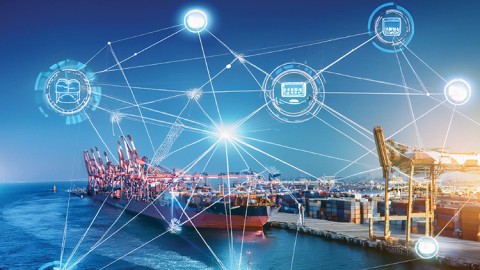As Europe scrambles to replace the gas coming from Russia, liquefied natural gas (LNG) comes into the spotlight as an energy source that can replace the millions of tonnes of gas it currently buys from its main provider, Russia. Natural gas is the second largest source of energy in the Europe, accounting for nearly 25% of its total consumption. The consequences of current events could cost Europe its valuable source of energy. This can explain the recent rush by European countries towards securing more shipments of LNG, while consolidating the proper infrastructure for receiving it. As of May 2022, 11 EU Member States were LNG importing countries, for a total regasification capacity of 160 billion cubic meters (bcm) per year.
The war in Ukraine has altered dynamics of the LNG and the prospects of the cleaner energy source for years to come. Here is a look on the LNG new prospects.
Nature Gas Crisis
Considering that natural gas is the most common heat source across multiple nations, the course of gas prices over the next several months is likely to be determined by how frigid it gets throughout the globe during Q4. These short-term pricing will have a significant influence on natural gas provider equities.
However, the approaching direction of fuel prices is less important for enterprises that handle and export natural gas in liquefied states. The soaring costs this year have persuaded gas importers to secure long-term contracts at high prices. Substantial prices are expected to persist this year as nations want to prevent the pandemonium that has erupted in recent months due to uncertain gas markets. Gas purchasers are hurrying to secure contracts to assure supply for the next coming years as limited uncontracted supply availability is fuelling apprehensions about supply security.
General Global Overview
Furthermore, high spot prices have indeed hampered trading and are expected to limit fuel demand growth in Asia, the world’s leading consumer area, though some nations face growing gas supply shortages as domestic output declines.
Meanwhile, in Europe, European leaders have addressed ideas to enhance the EU to become more tactically self-reliant from international suppliers in the oil and gas industry, especially after having been burned by supply constraints in microchips and medicines during the COVID-19 crisis. The unanimous decision was made to become less and less dependent on Russian supplies until eventually the region becomes fully independent and no longer in need of Russian oil and gas supplies. Furthermore, EU nations will integrate European gas and electricity networks in order to better share resources, completely integrate power grids, and strengthen emergency plans for supply security.
Egyptian Impact
While the situation in Ukraine is having a negative impact on Egypt, the Suez Canal is a different matter altogether. The surge of Western ships travelling through it in pursuit of oil and its derivatives made it the greatest income in Egypt thus far.
In fact, more LNG is currently transiting the Suez Canal travelling north from the Arab Gulf area to Europe. This pattern is expected to persist over the coming few months. In addition, LNG ships travelling from Russia, the United States, and North Africa to Asian countries have experienced a substantial increase as well.
When all of the nations’ production and surplus statistics is examined thoroughly, they cannot be equated to that of the Russian gas and oil exports. Therefore, an increase in oil flow via the Suez Canal is only likely to occur to a limited level, and this may already have occurred during the first quarter of this year.
It is expected, however, that just after this sudden rise in Suez Canal income caused by the Ukraine war and the energy transition, the globe would experience a situation of stagflation defined by high prices and sluggish growth. A Production & Planning Manager, who preferred anonymity, suggested that, “because Egypt depends on Russian-Ukraine based financial activities for a percentage of its tourist and Suez Canal income, this [war] could result in considerable profits as a result of the hindered economy, for now.”
Consequently, it was found that the potential to increase exports in the immediate term is constrained by two factors: (i) the total capacity of Egypt’s LNG facilities, which is currently at 12.2 million mt/year, and (ii) more critically, the presence of excess gas in Egypt for exports (especially with the unpredictable future of potential production levels). Thus, the most cost-effective solution is to spend on infrastructure to carry more commodities to Egypt and to improve the size of Egypt’s LNG facilities, albeit this presents the issue of over-reliance on a single shipping route via Egypt.
Thus, it can be noted that the Middle East and Mediterranean regions are strategically well-located to add value to Europe’s energy requirements, and it will strive to secure a share of these resources. The region’s countries stand to benefit if they provide the necessary incentives to shareholders, beginning with the basics, but also the ability to implement initiatives at the regional level to reduce costs and encourage competition, with the ultimate intent of enhancing revenue growth opportunities.
As certain nations strive to diversify energy supplies apart from Russian oil and gas, the Eastern Mediterranean region gets increasingly more crucial. All Eastern Mediterranean connectivity initiatives, whether it be via flowlines, LNG, or electrical linkages, must be closely investigated intensely to ensure effective execution.
In a recent interview on the sidelines of the World Economic Forum in Davos, Minister of Petroleum and Mineral Resources, Tarek El Molla, disclosed plans with the East Mediterranean countries to increase LNG exports to Europe during the upcoming period. The Minister said that Egypt is currently exporting 1 bcm of natural gas per day (bcm/d) and it is expected to increase to more than 1.5 bcm/d over the next two years.








